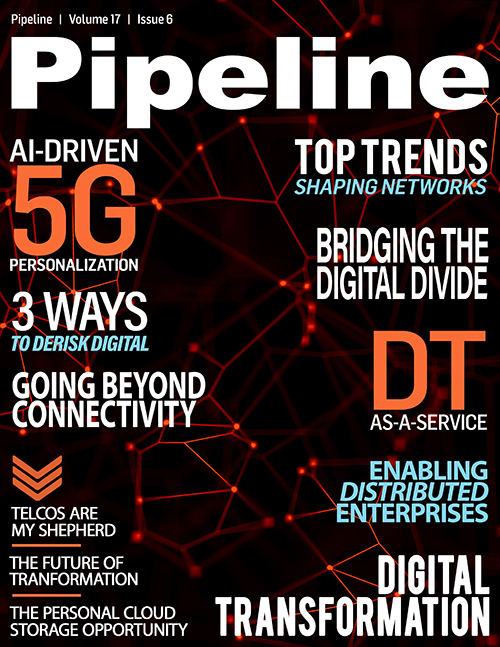3 Ways to Derisk the Digital Economy
For example, new services that rely on non-face-to-face customer relationships require securing digital identities based on the information exchanged between a CSP and their partners. This way, a CSP can ensure the unique and consistent identification of a subscriber, authentication, and policy assignment based on the identities, whether we are talking about a user or a thing.
The opportunity to leverage the digital transformation data exchange creates the capacity to analyze distributed big data for integrated risk management (IRM) purposes, rather than pursuing a more reactive approach that focuses on finding more data sets and understanding how to use them to address risk. An IRM strategy reduces siloed risk domains and supports dynamic business decision-making via risk-data correlations and shared risk processes.
Along with the connectivity platform, CSPs are in a prime position to understand and manage a wide scope of risk through a comprehensive view across business units, risk and compliance functions and key business partners, suppliers, and outsourced entities.
The goal should not be to create one big repository that can handle any data set, no matter how large. Instead, it should be to fully automate the linkage among relevant insights from a wide variety of internal and external sources and process that data in various nodes of the supply chain. Doing so triggers action immediately when possible and adds data to a queue for deeper analysis.
De-risk Strategy #3: Break data silos
To better address the needs of their stakeholders and organizations, CSPs must evolve their risk management programs to more integrated approaches. By doing so, CSPs will have better control and visibility, the ability to monitor risk-based decisions based on their digital business initiatives and partnerships and gain further alignment with business outcomes when making risk mitigation investments.
Traditional governance, risk, and compliance (GRC) projects have largely been developed on siloed approaches, missing the capability to link the business auditing practice with the continuous control of the value-chain risks.
Moreover, these GRC processes are often supported by investments in disparate sets of tools focused on specific capabilities, such as data collection or visualization. Still, they do not bring the business logic seen today on vertical CRM or ERP solutions. As CSPs are starting their journey toward 5G, they need to intelligently connect the data points into an integrated set of insights that link the expanding portfolio of assets, processes, and performance objectives that drive their business operations.
5G will deliver CSPs the capability to leverage new services as well as granular network control to generate multiparty B2B2X service revenues. At the same time, 5G will drive new risks from a combination of fragmented value chains and partners. New technologies like 5G may provide powerful benefits to enterprises, but they also influence workflow and processes, resulting in risk. Threat modeling is an essential exercise supporting a thorough risk assessment process that should benefit organizations.
Resilient organizations anticipate risks, develop controls, monitor events, and, whenever possible, apply automatic actions to remediate risks. Today, intelligent risk management value is derived from the intelligence analysis of the different elements of market value-chains powered by data analysis. The data generated by several application silos are combined and greatly enhanced to understand risk better. Building an automated capability requires more than a flair for writing algorithms. It requires an array of technical (quantitative, IT, and business) and nontechnical (communication, leadership, and teamwork) skills manifested in a mix of data science and other supporting roles. The right blend of technology and business skills is essential to choose the right partner to bring quick and positive business impacts during the deployment of a digital ecosystem risk management strategy.



















